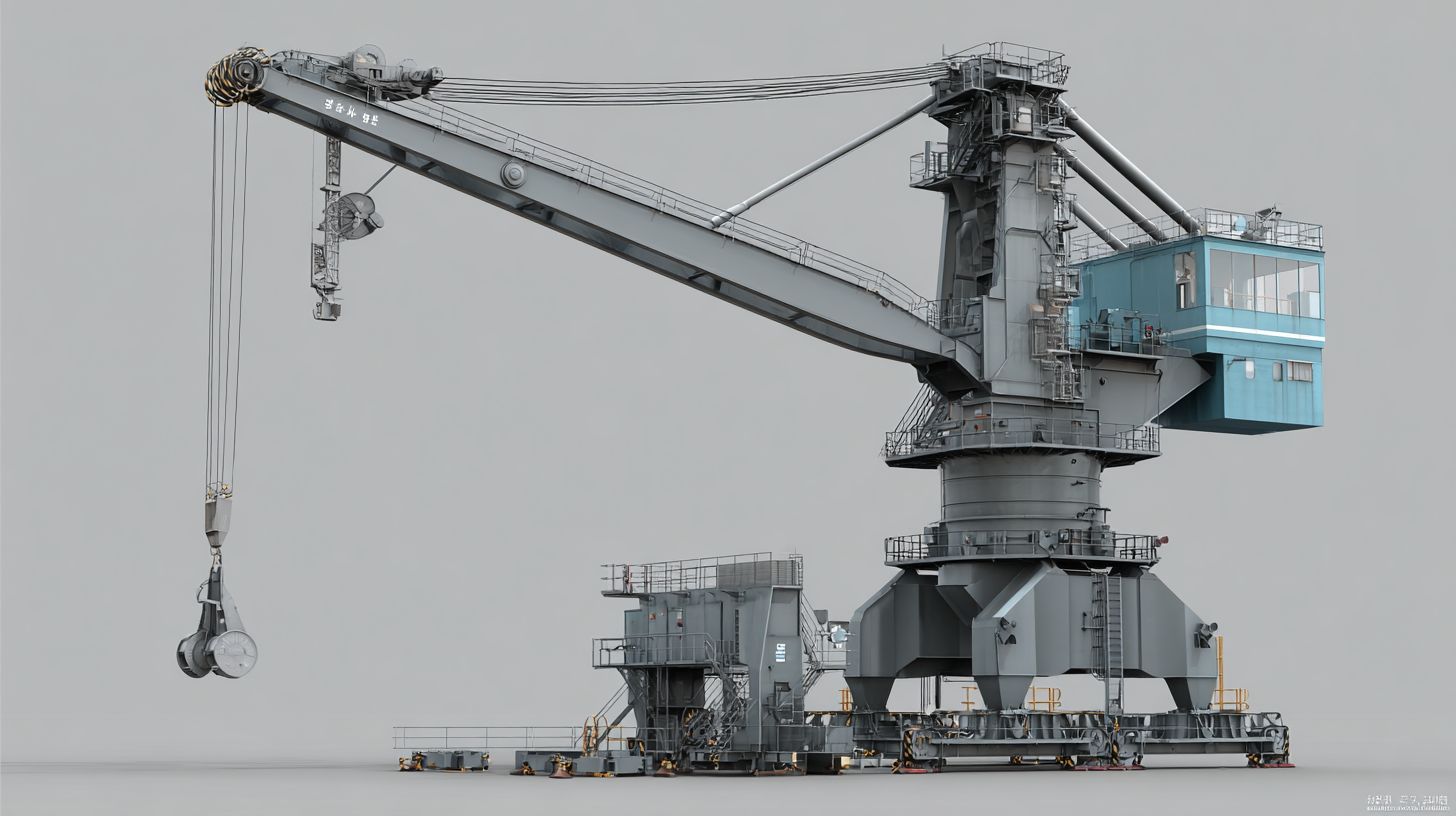Leave Your Message
-
Phone
-
E-mail
-
WhatsApp
In today's rapidly evolving construction and industrial sectors, maximizing the efficiency of equipment is pivotal for operational success, especially when it comes to Slewing Cranes. According to a recent report by the International Journal of Advanced Engineering Research and Science, nearly 40% of construction delays are attributed to equipment downtime, underscoring the critical need for robust after-sales support and maintenance strategies. As Slewing Cranes play a vital role in lifting and moving heavy materials, their reliability and performance directly impact project timelines and costs. This blog will delve into how effective after-sales support and affordable maintenance solutions can enhance the operational longevity of Slewing Cranes, ensuring that businesses can achieve maximum efficiency and minimize disruption in their projects.

When considering the optimal performance of slewing cranes, identifying key features is crucial. High-quality slewing cranes should demonstrate excellent load capacity, precise maneuverability, and robust safety mechanisms. The recent launch of a new 4000-ton slewing crane project emphasizes the importance of these features, showcasing the commitment to technological innovation and performance enhancement in the industry.
Tips for selecting the right slewing crane include evaluating the materials used in construction, which impact the durability and maintenance needs of the equipment. Additionally, consider cranes equipped with advanced control systems that enhance operational efficiency and safety. Regular maintenance is paramount; ensure that after-sales support focuses on affordable and comprehensive servicing options to prolong the equipment’s lifespan.
Moreover, make sure to assess the manufacturer’s reputation for delivering high-quality cranes alongside reliable after-sales support. Strong technical support and readily available spare parts can significantly reduce downtime and improve overall productivity, making it essential to factor these elements into your decision-making process.
 When investing in slewing cranes, after-sales support plays a crucial role in maintaining smooth operations. Evaluating supplier reputation is essential to ensure that you receive reliable support and maintenance services. A reputable supplier will not only provide high-quality products but also be committed to supporting their customers long after the initial sale.
When investing in slewing cranes, after-sales support plays a crucial role in maintaining smooth operations. Evaluating supplier reputation is essential to ensure that you receive reliable support and maintenance services. A reputable supplier will not only provide high-quality products but also be committed to supporting their customers long after the initial sale.
Here are some tips to consider when choosing the right after-sales support: First, research the supplier’s track record. Look for testimonials and case studies that highlight their reliability in providing maintenance and support. Second, assess their response times. A supplier known for quick and effective responses can minimize downtime, which is vital for operational efficiency. Lastly, inquire about the availability of spare parts and service technicians. A supplier with a strong network for parts and skilled technicians will be able to address any issues promptly, ensuring that your operations remain on track.
By prioritizing these factors, businesses can secure a dependable partnership that maximizes the efficiency and longevity of their slewing cranes. This careful evaluation of after-sales support can lead to better productivity and cost-effectiveness in the long run.
Understanding maintenance costs for slewing cranes is crucial for businesses aiming to maintain operational efficiency while keeping expenses in check. Balancing affordability with quality service can be a challenging endeavor; however, it is vital to grasp the intricacies of these costs to make informed decisions. A well-structured maintenance plan can help prevent costly downtime and extend the life of your equipment, ultimately leading to significant savings.
When selecting a maintenance provider, it is essential to evaluate the level of service offered alongside the pricing. Cheaper options may seem attractive at first, but they could lead to subpar repairs and increased long-term costs. Investing in comprehensive after-sales support ensures you receive high-quality service and timely repairs, which can mitigate potential issues before they escalate. This investment not only enhances the performance of your slewing crane but also fosters a productive relationship with your service provider, paving the way for ongoing support tailored to your operational needs.
| Maintenance Type | Average Cost ($) | Frequency (per year) | Total Annual Cost ($) | Quality Rating (1-5) |
|---|---|---|---|---|
| Routine Inspection | 150 | 4 | 600 | 5 |
| Lubrication Service | 100 | 2 | 200 | 4 |
| Parts Replacement | 300 | 1 | 300 | 3 |
| Calibration | 250 | 1 | 250 | 5 |
| Emergency Repairs | 500 | 2 | 1000 | 2 |
When selecting a slewing crane supplier, it’s essential to ask the right questions to ensure you maximize efficiency and long-term value. One critical aspect to consider is after-sales support and maintenance affordability. According to industry analysis, the global fixed crane market is projected to grow significantly, from USD 10.26 billion in 2018 to USD 22.66 billion by 2032, showcasing the increasing reliance on cranes in construction and infrastructure development. A supplier that offers comprehensive maintenance services can enhance operational efficiency and reduce unexpected downtimes.
Tips: Inquire about the supplier’s response times for maintenance support and the availability of spare parts. Additionally, understanding the training and support they provide for your operational staff can minimize the risks associated with crane operations.
Moreover, with the rise of advanced models, such as top-slewing tower cranes, ensuring your supplier stays updated on technological advancements is crucial. As seen with recent developments in the heavy lift crane segment, modern cranes offer enhanced capabilities but may require specialized knowledge for optimal maintenance.
Tips: Always ask about the supplier's familiarity with the latest crane technology and their ability to adapt to future innovations. This foresight can be invaluable in maintaining your crane’s efficiency over time.
In the crane industry, effective maintenance and support are crucial to maximizing efficiency and reducing downtime. According to a recent report by MarketsandMarkets, the global crane market is projected to reach $47 billion by 2026, highlighting the increasing demand for reliable machinery. To ensure long-term efficiency, companies must adopt best practices in crane maintenance. Regular inspections, which should be performed every three months, can identify and rectify potential issues before they escalate, thereby extending the equipment's lifespan.
 Tip: Schedule comprehensive training sessions for operators and maintenance staff at least twice a year to keep them updated on safety protocols and operational techniques. Equipped with the right knowledge, the team can prevent misoperations that lead to costly repairs.
Tip: Schedule comprehensive training sessions for operators and maintenance staff at least twice a year to keep them updated on safety protocols and operational techniques. Equipped with the right knowledge, the team can prevent misoperations that lead to costly repairs.
Additionally, implementing a predictive maintenance strategy can significantly enhance the performance of slewing cranes. Predictive maintenance relies on data analytics and IoT technology to foresee equipment failures. According to a study by McKinsey, companies that embrace predictive maintenance can reduce equipment downtime by up to 50% and extend asset life by 20%.
Tip: Utilize maintenance management software to track service schedules and performance metrics. This transparency not only facilitates timely interventions but also helps in budgeting for maintenance costs effectively.
